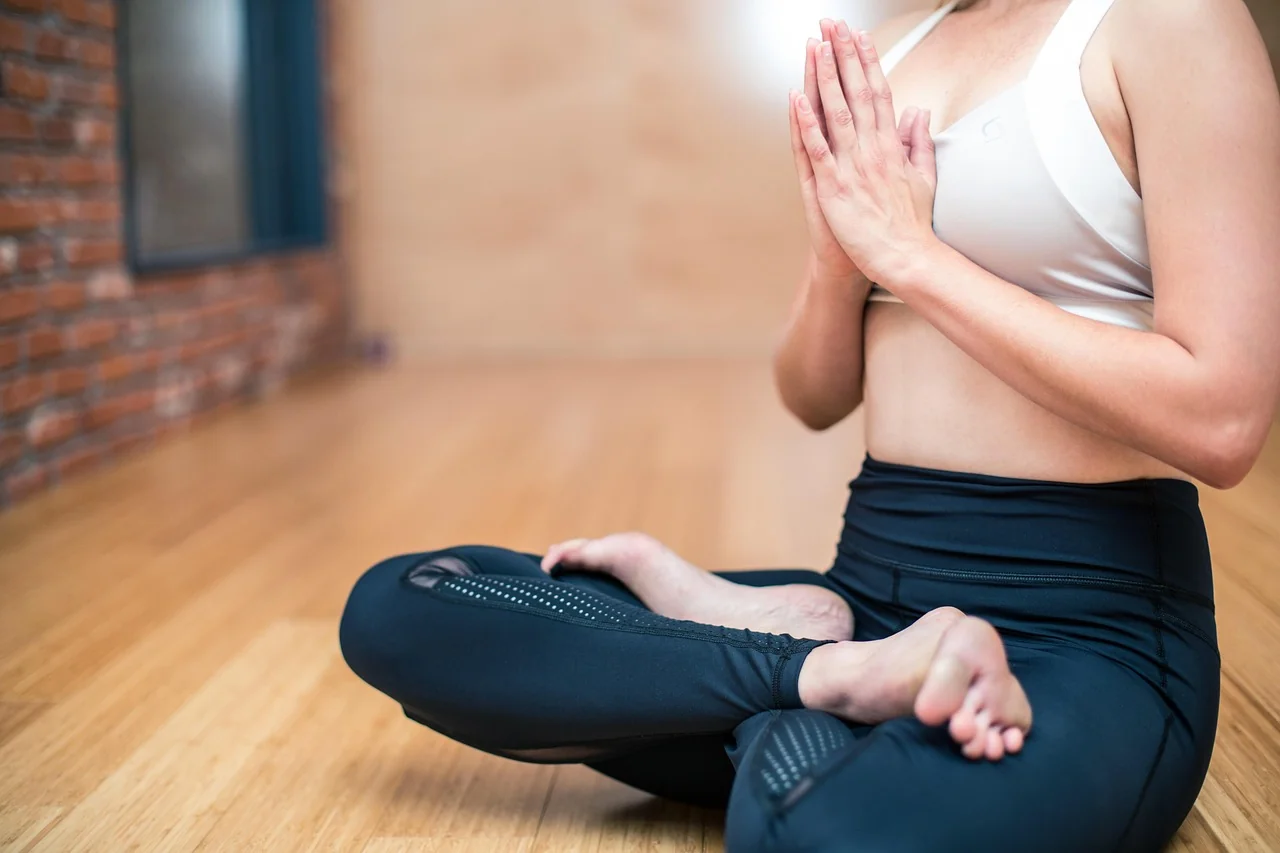Does your mind ever feel like a browser with too many tabs open? The constant hum of stress, the ping of anxiety, and the mental clutter of modern life can leave you feeling drained and disconnected. In the search for calm, the ancient practice of meditation for mental wellbeing has emerged as a powerful, scientifically-backed tool for anyone looking to reclaim a sense of peace. But what if you’ve been led to believe it’s about emptying your mind or achieving perfection? The truth is far more accessible and transformative.
This guide is your friendly, no-fluff starting point. We’ll demystify the process, walking you through the proven mental health benefits—from taming stress to improving focus—and provide simple, actionable steps to begin your own practice today. You’ll learn how to navigate common hurdles, explore different techniques, and discover how to build a sustainable habit that fits into your busy life. Ready to close a few of those mental tabs and find your center? Let’s begin.
The Science of Serenity: How Meditation Benefits Your Mind
You might have heard that meditation is good for you, but the depth of its impact on your mental landscape is truly remarkable. This isn't just spiritual theory; it's a practice backed by neuroscience and psychology. By consistently training your attention and awareness, you can create tangible, positive changes in your brain's structure and function. This is the foundation of using meditation for mental health as a practical tool.
Here are some of the most significant, evidence-based benefits you can expect:
Reduces Stress and Anxiety: This is often the number one reason people turn to meditation. When you meditate, you directly influence your body's stress response. Studies show it can lower levels of cortisol, the stress hormone, and decrease activity in the amygdala, the brain's "alarm system." This doesn't mean stress disappears, but your reaction to it becomes more measured, creating a buffer against anxiety.
Improves Focus and Concentration: In a world of endless notifications, our attention is constantly fractured. Meditation is like a workout for your focus muscle. Research has linked regular practice to increased gray matter density in the prefrontal cortex, the area of the brain responsible for executive functions like attention and self-control. You get better at noticing when your mind has wandered and gently guiding it back, a skill that translates directly to work and daily life.
Enhances Emotional Regulation: Do you ever feel at the mercy of your emotions? Meditation helps create a crucial pause between feeling an emotion and reacting to it. Instead of being swept away by a wave of anger or sadness, you learn to observe the emotion with curiosity. This mindful awareness allows you to choose a more skillful response, leading to greater emotional balance and resilience. For those looking to build this resilience, our guide on meditation for mental strength offers targeted techniques.
Increases Self-Awareness: Meditation cultivates metacognition—the ability to think about your own thinking. You start to notice your habitual thought patterns, both helpful and unhelpful. Are you a chronic worrier? Do you tend to be self-critical? This non-judgmental observation is the first step toward understanding yourself better and making conscious changes.
Promotes Better Sleep: A racing mind is the enemy of restful sleep. The relaxation and mental quieting fostered by mindfulness meditation can be a powerful antidote to insomnia. By practicing letting go of thoughts during the day, it becomes easier to let go of them at night, allowing your nervous system to settle into a state conducive to deep, restorative sleep.
Your First Steps in a Meditation for Mental Wellbeing Practice
The theory is great, but the real magic happens when you start practicing. The idea of "meditating" can feel intimidating, but it's far simpler than most people imagine. You don't need special equipment, a huge time commitment, or any particular belief system. You just need a few minutes and a willingness to try.
Here’s a straightforward guide to your first session.
Setting Up for Success
Your environment and posture can make a big difference, especially when you're starting out.
- Find a Quiet Space: Choose a place where you’re unlikely to be interrupted for a few minutes. It doesn't have to be perfectly silent—just reasonably calm.
- Settle Your Posture: The goal is to be both alert and relaxed. You can sit in a chair with your feet flat on the floor, on a cushion with your legs crossed, or even kneel using a meditation bench. The key is to keep your back relatively straight, not rigid. Imagine your head floating up toward the ceiling. If sitting is uncomfortable, lying down is also an option, though it's easier to fall asleep.
- Set a Time Limit: For your first time, aim for just 5 minutes. A short, successful practice is better than a long, frustrating one. You can use a gentle timer on your phone or a dedicated meditation app.
A Simple Breath Awareness Practice
This is the most fundamental form of mindfulness for beginners. Your breath is always with you, making it the perfect anchor for your attention.
- Gently close your eyes or lower your gaze.
- Bring your awareness to the physical sensation of your breath. You don't need to control it or make it deeper. Just notice it. A good anchor point is the feeling of the air moving in and out of your nostrils, or the rise and fall of your chest or abdomen.
- Your mind will wander. This is not a mistake; it is the entire practice. The moment you realize your attention has drifted to a thought, a sound, or a bodily sensation, simply acknowledge it without judgment. You can even say to yourself, "thinking," or "wandering."
- Gently guide your focus back to the sensation of your breath. This act of noticing and returning is the repetition that builds your mental muscle.
- Continue this process for the duration of your session. When the timer rings, don't jump up immediately. Take a moment to notice how you feel. Gently open your eyes and slowly transition back into your day.
Navigating Obstacles in Your Mental Wellbeing Meditation Journey
It’s completely normal to face challenges when you start meditating. In fact, encountering these hurdles is a sign you’re doing it right! The key is to reframe them not as failures, but as opportunities to learn more about your mind.
Here’s how to work with some of the most common meditation challenges.
"I Can't Stop My Thoughts." This is the number one concern, and the solution is a paradigm shift. The goal of meditation is not to stop your thoughts. It’s to change your relationship with them. Imagine your mind is a clear blue sky, and your thoughts are just clouds passing by. You don't need to stop the clouds; you just learn to watch them drift past without getting caught up in the storm. Every time you notice a thought and return to your breath, you've just completed a successful rep of your mental workout.
"I Don't Have Enough Time." This is a valid feeling in a busy world. The solution is to let go of the idea that you need 30 perfect, silent minutes. Consistency is far more important than duration. Can you find five minutes? How about one? Try a "micro-meditation": take three conscious breaths before you check your email in the morning, or spend 60 seconds focusing on your breath before you get out of your car. Weaving these tiny moments of mindfulness for beginners into your existing routine makes it sustainable.
"I Get Too Restless or Impatient." If sitting still feels physically or mentally agonizing, don't force it. Try a different style. Walking meditation is a fantastic alternative. Find a quiet path and slowly walk, focusing all your attention on the physical sensations of movement—the lift of your foot, the swing of your leg, the placement of your heel. Alternatively, using a guided meditation from an app or online can give your busy mind an external voice to focus on, easing the restlessness.
"I'm Not Sure If I'm Doing It Right." If you're sitting down and making an effort to guide your attention back, you are doing it right. There is no perfect meditation. Some days your mind will feel calm; other days it will be a whirlwind. The value comes from the commitment to show up, not from achieving a particular state. Let go of the need for a specific result and trust the process. For a realistic look at the long-term journey, check out this honest review of meditation for mental balance.
Exploring Different Meditation Techniques
Once you're comfortable with basic breath awareness, you might enjoy exploring other techniques. Different styles can suit different moods and personalities, keeping your practice fresh and engaging.
Mindfulness Meditation
This is the practice we’ve primarily discussed. It involves paying attention to your present-moment experience—thoughts, emotions, bodily sensations—without judgment. The anchor can be your breath, sounds in the room, or even the flow of thoughts themselves. It's the cornerstone of meditation for mental health.
Guided Meditation
In this style, you listen to a teacher or a recording that leads you through a specific experience. This could be a body scan (bringing awareness to each part of the body), a visualization, or a loving-kindness practice. It's an excellent tool for beginners or anyone who finds their mind needs more structure. You can get started with a ready-to-use guided meditation script for relaxation.
Loving-Kindness Meditation (Metta)
This practice is specifically designed to cultivate feelings of compassion and love, first for yourself and then for others. You silently repeat a series of phrases, such as "May I be happy. May I be safe. May I be healthy. May I live with ease." You then extend these well-wishes to a loved one, a neutral person, a difficult person, and finally to all beings. It's a powerful antidote to anger, frustration, and social anxiety.
Body Scan Meditation
This technique involves systematically moving your attention through different parts of your body, from your toes to the top of your head. You simply notice any sensations you find—warmth, tension, tingling, or nothing at all—without trying to change them. This is a deeply relaxing practice that helps you reconnect with your physical self and is often used to aid sleep. For those seeking a deeper sense of calm, exploring meditation for silence can be a natural next step.
Building a Sustainable Meditation Habit
The profound benefits of meditation for mental wellbeing unfold through regular practice. Turning meditation from a one-off experiment into a consistent habit is the final, crucial step.
- Start Small and Be Consistent: Commit to just five minutes a day, every day, for one month. This is far more effective than 30 minutes once a week. The goal is to build the neural pathway of the habit itself.
- Anchor It to an Existing Routine: Link your meditation practice to something you already do consistently. This is called "habit stacking." For example, "After I pour my morning coffee, I will meditate for five minutes," or "Right before I brush my teeth at night, I will do a body scan."
- Create a Dedicated Space: If possible, set up a small corner with a cushion or chair. Having a physical spot reserved for your practice reinforces the habit mentally.
- Be Kind to Yourself (No Perfection Needed): You will miss days. That's okay. The practice of self-compassion is as important as the meditation itself. When you miss a day, just gently return to your practice the next day without self-criticism. This isn't about a perfect streak; it's about a compassionate commitment to your own wellbeing.
The journey of meditation for mental wellbeing is a personal one, offering a sanctuary of calm in the midst of life's chaos. It’s a lifelong skill that empowers you to navigate challenges with greater clarity, resilience, and peace. By starting small, being consistent, and approaching yourself with kindness, you can build a practice that supports your mental health for years to come. Your clearer, calmer mind is waiting.
In summary, the practice of meditation offers a powerful and accessible pathway to enhanced mental wellbeing. By dedicating even a few minutes each day to mindfulness, individuals can cultivate a greater sense of calm, improve emotional regulation, and build resilience against the stresses of modern life. The techniques explored, from focused attention to loving-kindness meditation, provide practical tools for managing anxiety, sharpening concentration, and fostering a healthier relationship with one's own thoughts. The journey is not about achieving perfection but about consistent practice and gentle self-awareness. This personal commitment to inner stillness is a profound act of self-care. Begin your practice today, be patient with the process, and discover the transformative potential that lies within your own mind, empowering you to navigate life with greater clarity and peace.



